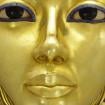
Scribes in Egypt: Brilliant Practitioners of the Outstanding Profession – Part II
Scribes were counted among the elite in ancient Egypt and led charmed, yet challenging, lives. They influenced virtually every sphere of the public and private affairs of the citizenry to an astounding degree. Be it the Pharaoh or lay person - everyone needed the services of scribes. This catapulted their lot into a different league altogether; one that would bring them great acclaim and accolades, and even controversy at times. Scribes mostly rendered their services in the royal court, temples and administrative offices. However, their other noteworthy achievements were the result of collaborating with workers in departments such as the army, and the vast numbers of artisans and architects.

Nebamun, a middle-ranking official ‘scribe and grain accountant’ during the New Kingdom is shown hunting in the marshes, in a scene from his tomb-chapel. His name was translated as ‘My Lord is Amun’, and his association with the temple, coupled with the importance of grain supplies to Egypt, meant that he was a person of considerable practical importance. British Museum.
Did Women Serve as Scribes?
Due to the general lack of representations of women with scribal tools such as the palette and brush/pen in art; a general misconception prevails that ladies in ancient Egypt were unlettered. This is far from the truth, as in no way does it imply that women did not learn to read and write. Gaining literacy and being a scribe are two different things. For example, we know that Queen Tiye had her own library; but, was she a ‘scribe’ in the literal sense? Those women who were literate usually served in the medical profession - writing or translating texts pertaining to that field. It is also a certainty that many of the temple priestesses were highly-educated women.

On the Southern Part of the East Wall of Horemheb’s Saqqaran tomb, military scribes, magnificently represented, scrupulously record the details of long files of prisoners escorted by Egyptian soldiers (not in pic). This depiction is often speculated to represent women scribes.
Egyptological researcher, Gitta Warnemünde, informed the present writer: “Hellmut Brunner writes that there was one female scribe ‘in the entourage of a queen of the 13th Dynasty’ and another one from the 26th Dynasty as an official to a God’s Wife of Amun.
Like this Preview and want to read on? You can! JOIN US THERE ( with easy, instant access ) and see what you’re missing!! All Premium articles are available in full, with immediate access.
For the price of a cup of coffee, you get this and all the other great benefits at Ancient Origins Premium. And - each time you support AO Premium, you support independent thought and writing.
Independent researcher and playwright Anand Balaji is an Ancient Origins guest writer and author of Sands of Amarna: End of Akhenaten.
The author expresses his gratitude to Marcel Maessen, t3.wy Projects for granting permission to use exclusive photographs of rare Tutankhamun-era artifacts.
[The author thanks Dr Chris Naunton, Merja Attia, Heidi Kontkanen, Leslie D. Black and Leena Pekkalainen for granting permission to use their photographs. The public archives of the Metropolitan Museum of Art can be accessed here.]
Top Image: We can understand the progression of decoration in an ancient Egyptian tomb by analyzing the images present in KV57, the tomb of King Horemheb - the last pharaoh of the 18th Dynasty - in the Valley of the Kings. (Image : Dr Chris Naunton)
By Anand Balaji














